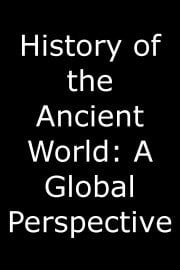
Ep 40. Later Roman Empire: Crisis and Christianity
- TV-PG
- December 16, 2011
- 31 min
The Later Roman Empire: Crisis and Christianity is the fortieth episode of the first season of History of the Ancient World: A Global Perspective. In this episode, viewers will explore the tumultuous events that took place in the Roman Empire during the 3rd and 4th centuries AD.
The episode begins by explaining how the Roman Empire had expanded to its greatest extent and was at the height of its power in the 2nd century AD. However, during the 3rd century AD, the empire experienced a period of crisis and decline. Political instability, economic turmoil, and military threats from barbarian tribes all contributed to the collapse of the once-powerful empire.
Viewers will learn about the reign of Diocletian, who recognized the empire's administration had become too unwieldy and divided to be managed by one person. To address this issue, he created a new governmental system known as the Tetrarchy, which divided the empire into four regions, each with its own ruler. While initially successful, this system eventually broke down due to conflicts among the rulers.
The episode also delves into the rise of Christianity in the empire. Initially persecuted, Christians were eventually tolerated and even embraced by the later emperors. Viewers will learn how Constantine, the first Christian emperor, played a critical role in the religion's expansion and how his conversion helped to solidify a new sense of Roman identity.
The episode also explores the changing nature of Roman society during this time. The old Roman aristocracy was replaced by a new class of wealthy businessmen and bureaucrats, and the economy shifted from agriculture to industry. These changes had a profound impact on the empire's social, economic, and political structures.
Lastly, the episode explores the barbarian invasions that ultimately contributed to the fall of the Western Roman Empire. The Huns and other tribes from the north posed a significant threat to the empire, and many were eventually allowed into the empire as federates, or allies. However, this policy ultimately backfired, and the final collapse of the Western Roman Empire in 476 AD marked the end of ancient Rome.
Overall, The Later Roman Empire: Crisis and Christianity provides viewers with a comprehensive understanding of the tumultuous period that marked the end of ancient Rome. From political instability and economic turmoil to the rise of Christianity and the threat of barbarian invasions, viewers will gain a deep appreciation for the complex factors that contributed to the fall of one of history's greatest empires.
